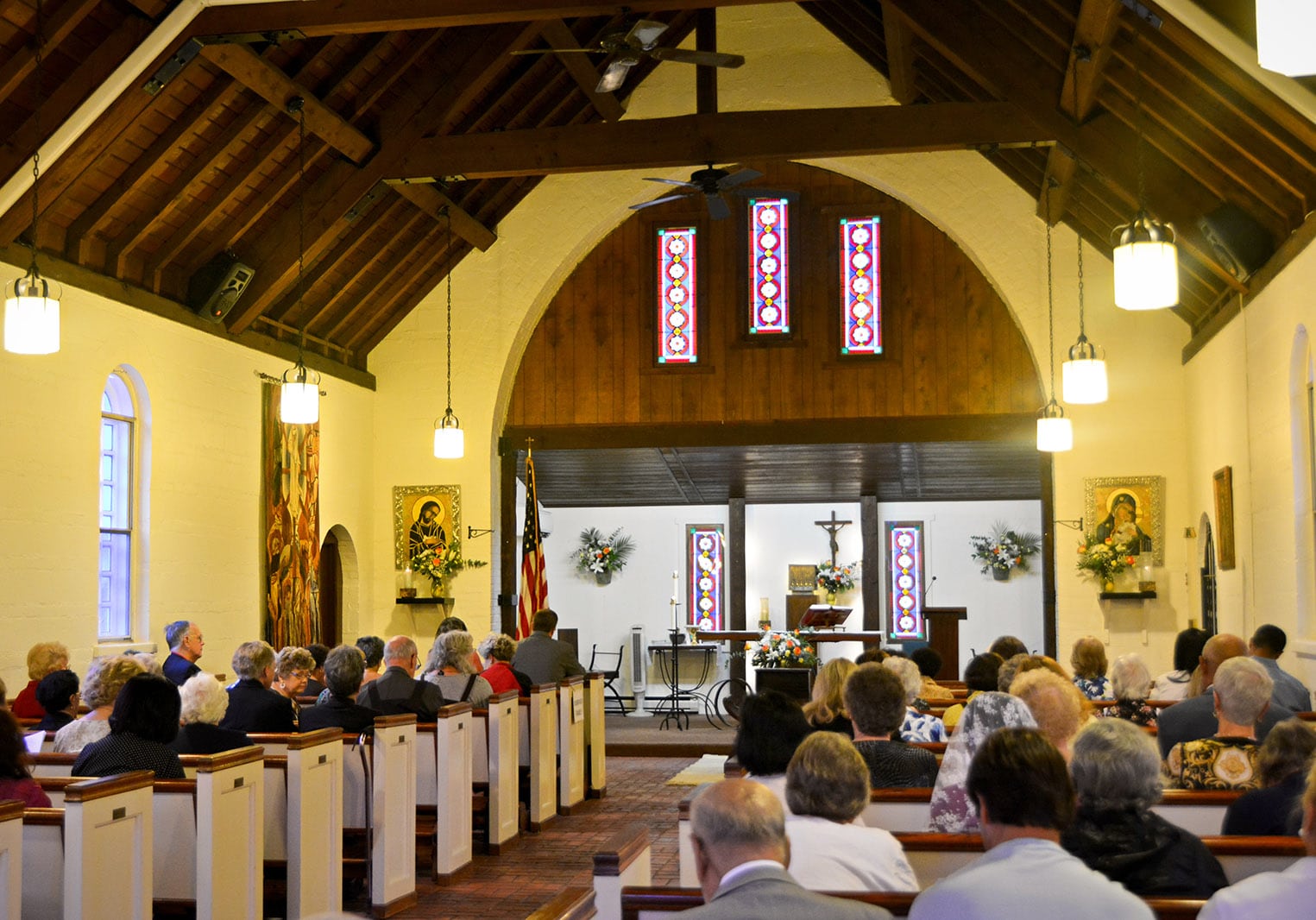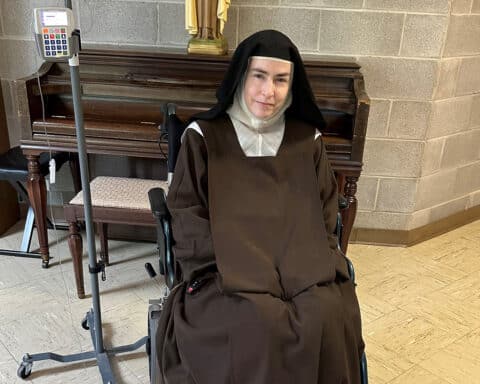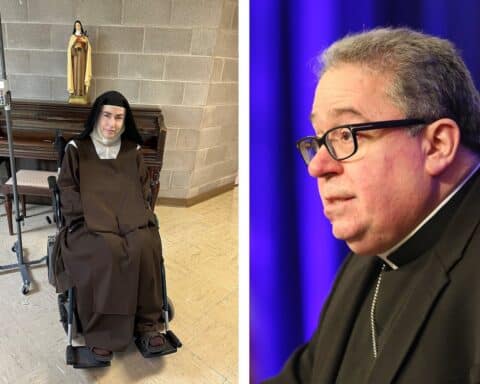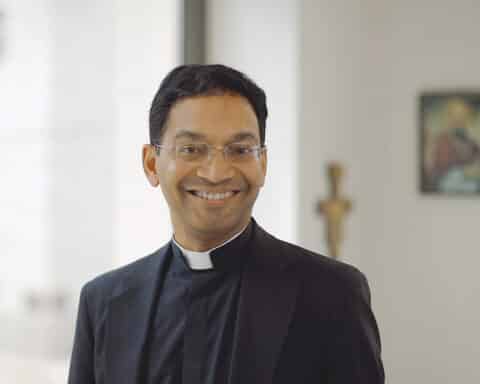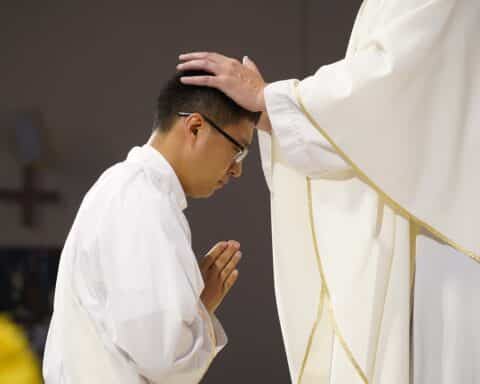In the quiet, wooded hills of southern Maryland, a hidden gem stands: the first Catholic monastery in the United States.
Founded in 1790, the Mount Carmel Monastery in La Plata — the first convent of religious women in the original 13 states and the first American Carmelite monastery — houses 10 Carmelite nuns. The cloistered nuns live a contemplative life, away from the public eye.
Their mission is a crucial one: In dedicating their lives to God, they serve as a beating heart, pumping life into the Church and the world with their prayers.
“We are the Discalced Carmelite Nuns and our charism and apostolate is to pray for souls, to pray for priests, and the needs of the Church and the world,” Mother Marie Bernardina of Divine Mercy, OCD, the prioress of the Discalced Carmelite Nuns of the Carmel of Port Tobacco, told Our Sunday Visitor.
The nuns live and work inside the monastery. At the same time, they invite visitors to attend Mass at their chapel, tour their historic buildings, relax in their gardens, and browse their gift shop that displays, among other things, their handmade quilts.
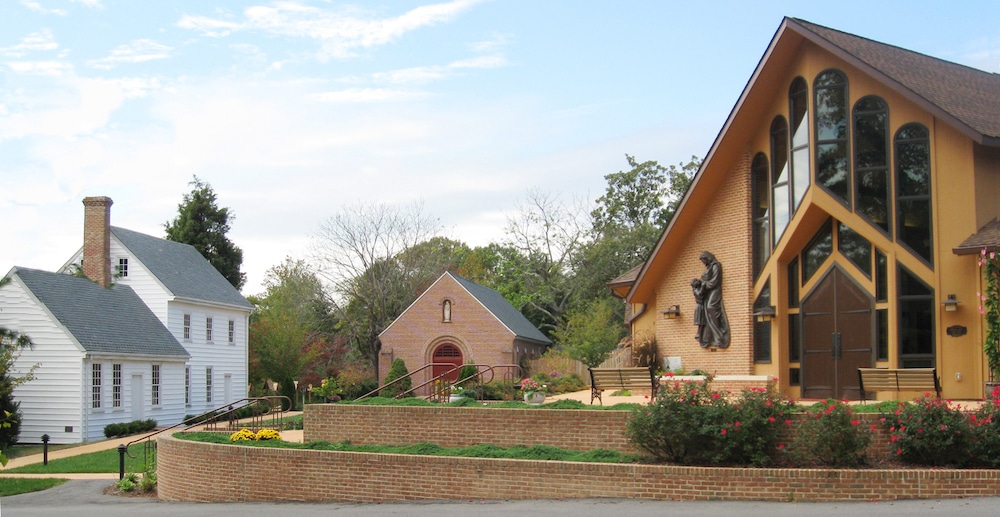
An updated chapel
This year, the nuns are adding something new to the old monastery, with their chapel expansion project.
“Our expanded and renovated chapel is going to be very beautiful and give God much glory and honor,” Mother Maria Bernardina revealed.
The chapel, built in 1954 on the site of the original chapel, was left unfinished according to the designs of Philip H. Frohman, who is perhaps best known for his work on the Washington National Cathedral in Washington, D.C.
The project includes a new sanctuary with a stained-glass window of Our Lady of Mount Carmel as well as a new tabernacle, altar, statues of Our Lady, St. Joseph, and the Infant of Prague, and a life-size crucifix. It will also provide more room for the daily Mass-goers, a new sacristy and confessional for the nuns, and a larger nuns’ choir.
The chapel dedicated to Our Lady of Mount Carmel, the nuns hope, will be completed by December.
A piece of history
The monastery began after three Catholic women from southern Maryland wanted to enter a monastery in the mid-1700s. But, at the time, none existed.
“Catholics were denied religious freedom in the United States until the Bill of Rights in 1787, which guaranteed freedom of religion,” Mother Marie Bernardina explained.
Instead, the women — Ann Matthews and her nieces Ann Teresa and Susanna Matthews — entered a Carmelite monastery in Belgium. Following the Bill of Rights, Ann Matthews, now Mother Bernardina Matthews, received a letter from her brother in Maryland.
“Now is the time to found [a monastery] in this country for peace is declared and religion is free,” Father Ignatius Matthews, S.J., encouraged his sister.
| Support |
|---|
|
Everyday Catholics can support the nuns, beginning by visiting their website, www.carmelofporttobacco.com. Online, the nuns welcome spiritual, material and monetary donations. People can also purchase tickets for an upcoming fundraiser for the chapel expansion: Prizes for the “Friends of Carmel” raffle on Oct. 15 include handmade quilts and a diamond necklace. Catholics can also explore the gift shop online or in La Plata. To stay connected, the nuns invite Catholics to join their mailing list to receive newsletters and novena mailings. |
His letter worked. Mother Marie, her nieces, and another sister sailed to America.
The nuns remained at the monastery until 1831, when they moved to Baltimore after the death of their spiritual director. They relocated for several reasons: the failure of the land to support them, the deterioration of the buildings, and financial law disputes.
The nuns began teaching at a girls’ school. At the same time, the locals in southern Maryland remembered the nuns — and prayed for their return.
More than 100 years later, in 1976, they did. Today, two of the original buildings still stand and are open to the public as a museum.
“These buildings were restored in 1935 by a group of lay women and men called the Restorers of Mount Carmel,” Mother Marie Bernardina said, adding that the same group also built the 1954 chapel.
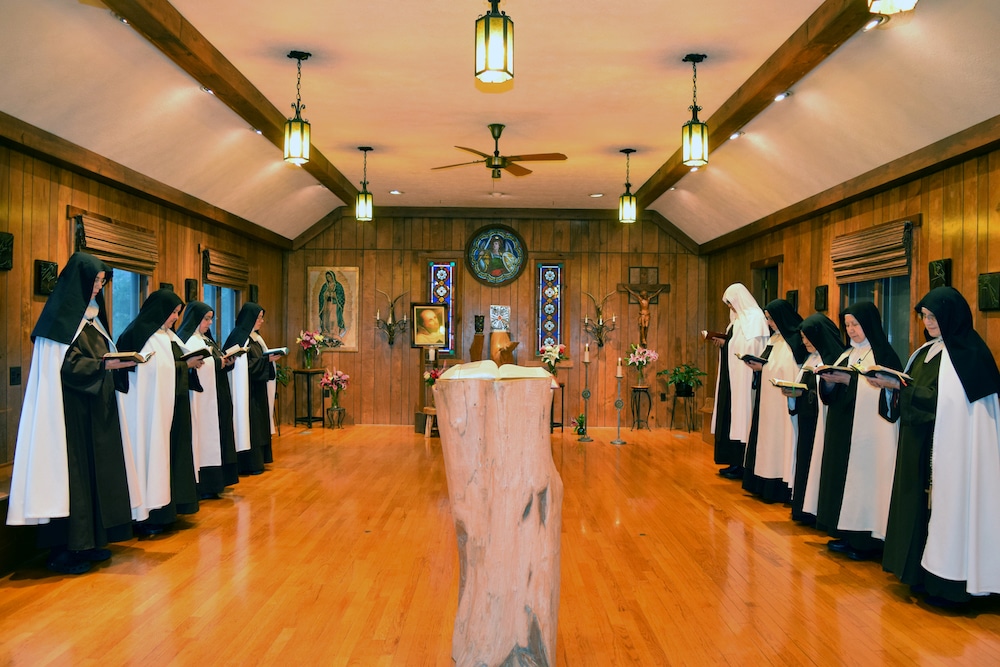
A way of life
The nuns’ life is one of prayer: They pray the Divine Office in addition to dedicating time to quiet mental prayer, community prayers, and spiritual and Scripture reading.
Mother Marie Bernardina shared her current favorite prayer, from the “Surrender novena” by Father Dolindo Ruotolo: “O Jesus, I surrender myself to you, take care of everything!”
When nuns are not praying, they work. They create things to sell in the gift shop, send novena mailings, respond to the many prayer requests they receive, and maintain the monastery by cooking, cleaning, sewing and gardening.
At the end of their day, the nuns set aside time for recreation, which includes talking — and laughter.
“This is the primary reason we created our website — to attract new vocations and awareness of our life of prayer for the many people who ask us to pray for them and their families.”
— Mother Marie Bernardina
The nuns, Mother Marie Bernardina said, pray daily for new vocations.
“This is the primary reason we created our website — to attract new vocations and awareness of our life of prayer for the many people who ask us to pray for them and their families,” she said.
In addition to the nuns asking the Infant of Prague and St. Thérèse for vocations, their daily Mass-goers pray to St. Joseph.
“We really do want young women to know that we’re here, even though we’re very hidden,” Mother Marie Bernardina said, adding that “this way of life is a way to serve God, if you have that call.”
On their vocations page, the nuns provide information for discerning young women. They list, among other qualities, a sense of humor.
“God wants us to be fully human, as he created us to be,” she explained.
A love story
Mother Marie Bernardina shared her own vocation story. Growing up Catholic in Bowie, Maryland, she described herself as a typical young adult. But, even with a federal government job, her own car, friends to see, parties to attend and boyfriends to date, she felt unhappy and restless.
Then, she said, two events shook her to her core: her brother committed suicide and her mother died of pancreatic cancer.
“I started wondering, ‘What is the purpose of my life?'” she remembered.
She began seeking new, more wholesome friends. At a non-denominational Bible study, she encountered committed Christians who asked questions about her Catholic faith, leading her to investigate her own beliefs.
She found happiness researching her faith, embarking on pilgrimages worldwide, and attending retreats and charismatic prayer groups. At the same time, she struggled to find “Mr. Right” to marry.
“I prayed a lot to discern what’s God’s will for me,” she said. “I knew that I wouldn’t be happy unless I did whatever God wanted me to do.”
Even though she had never seen a nun or religious sister, she began investigating different orders. As she fell deeper in love with Jesus, the thought came to her: “Maybe Jesus is the husband I’m looking for.”
“If that’s where you think I will be the happiest, Lord, that’s what I want too.”
— Mother Marie Bernardina
She responded, “If that’s where you think I will be the happiest, Lord, that’s what I want too.”
She later began a 30-day consecration to Mary. The last day, she noticed, fell on the feast of Our Lady of Mount Carmel, patroness of the Carmelite order.
“What’s a Carmel?” she remembered thinking. “What’s Mount Carmel?”
She learned about a local Carmelite monastery in La Plata. She went and, to her surprise, discovered that nuns lived there.
“I was blown away by the radicalness of their life — a room of nuns behind a grille, clothed head to toe and very happy!” she recalled.
She knew that she belonged here. When she received the Carmelite habit in 1990, she took the religious name of the foundress, Mother Marie.
“I’m now prioress myself, never dreaming that I would be,” she said. “But this is my mission that God has given to me for this time in my life, to lead this community as best I can with God’s grace.”

